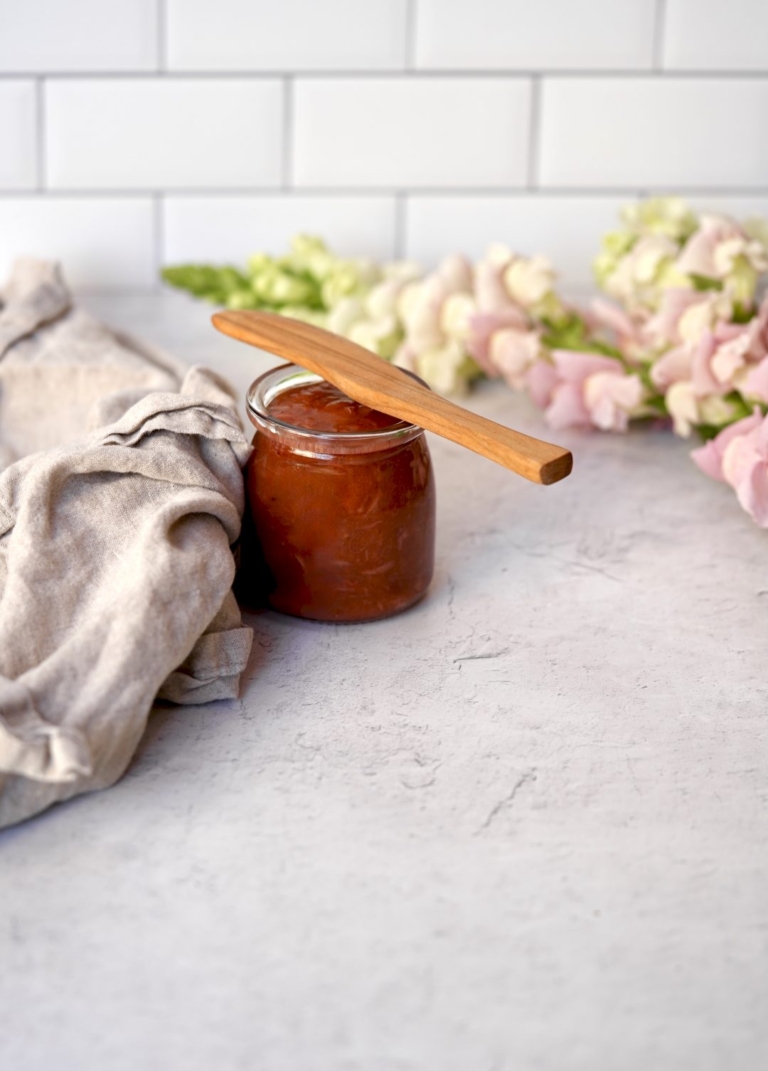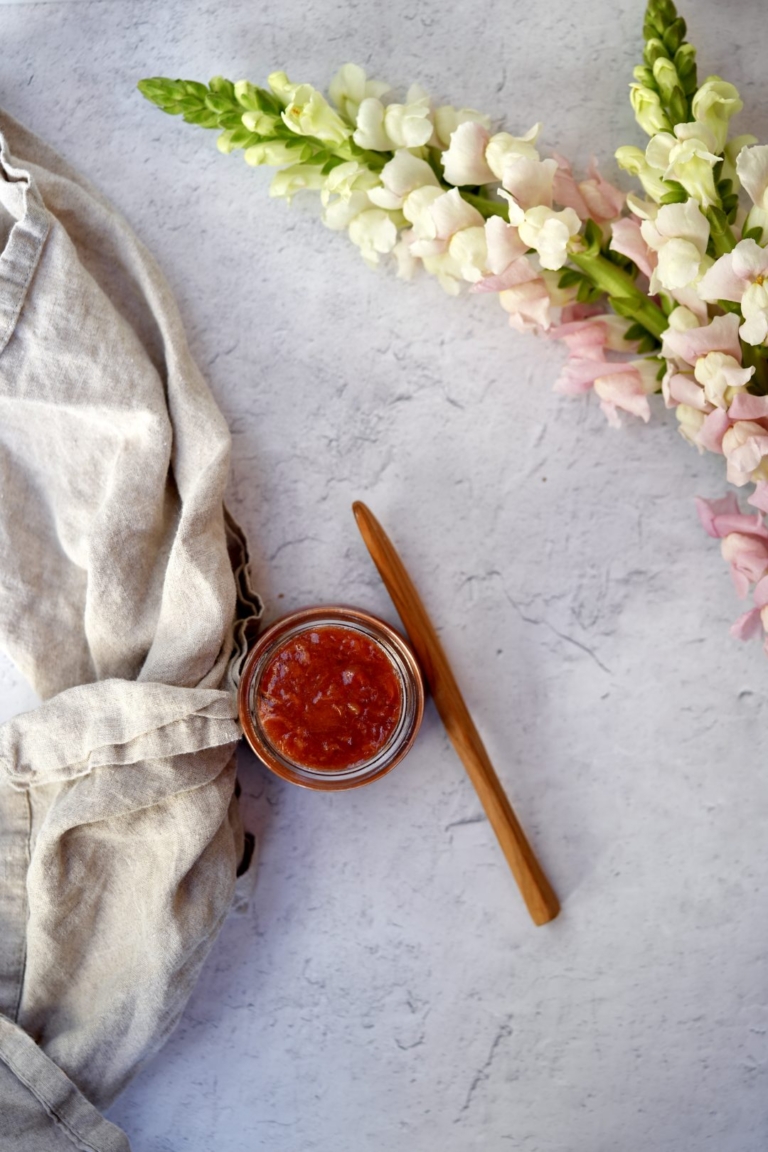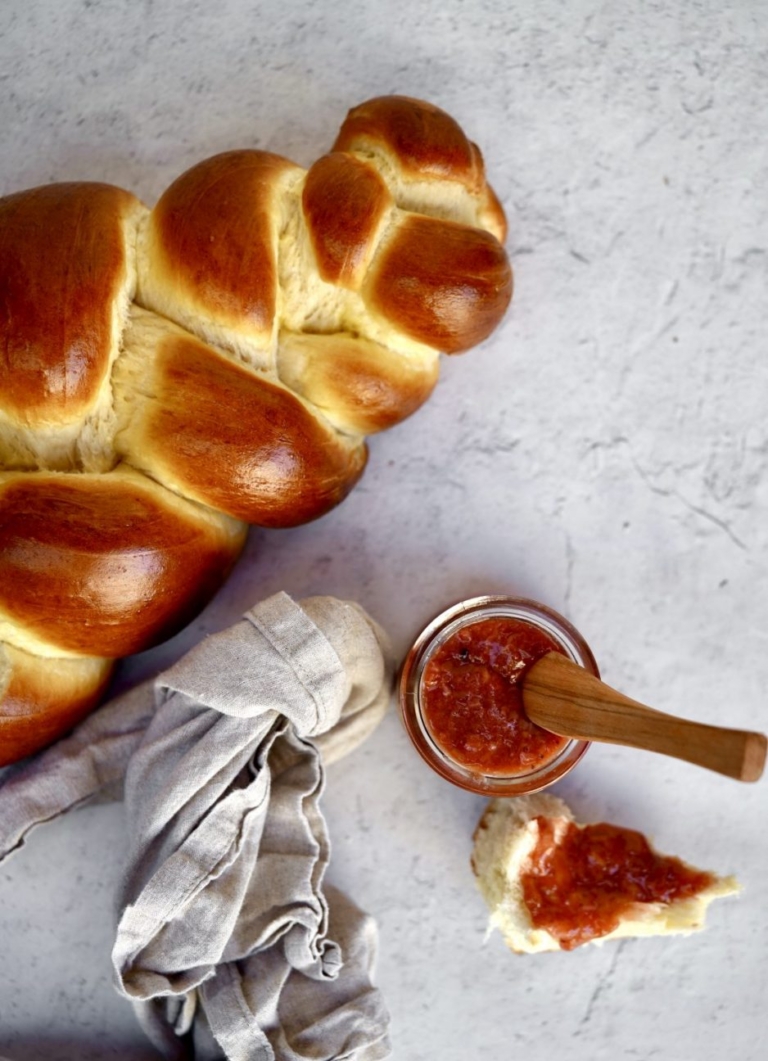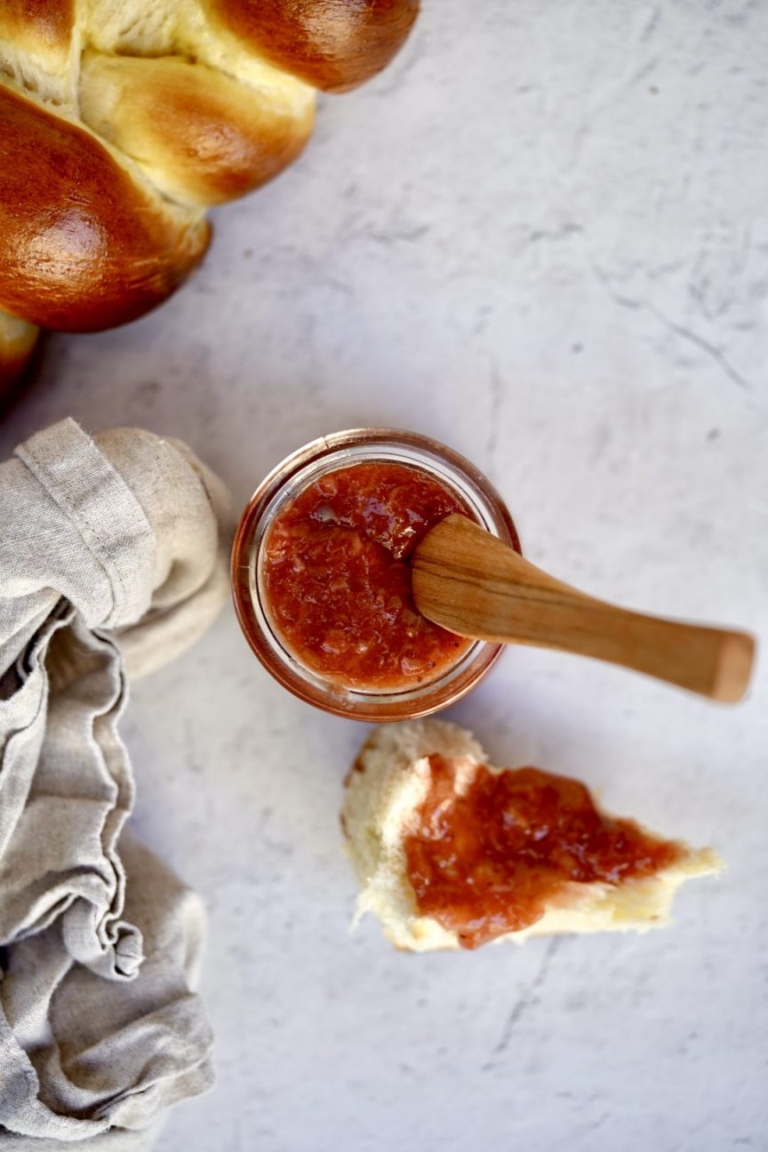Strawberry Rhubarb Jam
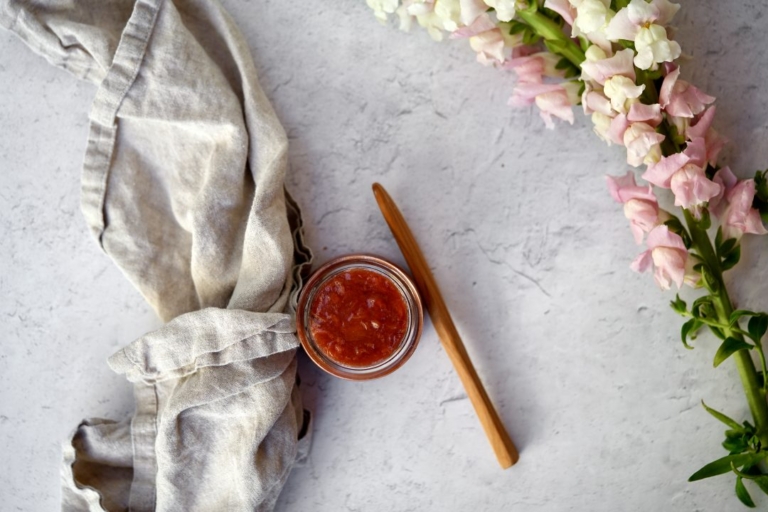
Summer and jam just go together. Strawberry rhubarb jam is number one on my list of jam favorites. To clarify, jams, jellies, marmalades, and conserves are all somewhat similar. They all are a mixture of fruit and sugar and share the basic preparation of crushing ripe fruit to release its juice, adding sugar and heating the mixture to a boil, cooking it until it’s ready to set. But these irresistible spreads do have some important subtle differences.
Jam, Jelly and Marmalade
Jam refers to a product made of whole fruit cut into pieces or crushed, then heated with water and sugar until it reaches “jelling” occurs. Jellies are made only from the juice of fruits; the solids are strained from the juice before the sugar is added. With jams, the fruit pieces are left in the mixture. And marmalades are jellies in which pieces of fruit are suspended, but not crushed.
Pectin plays an important part in making jams, jellies, or marmalades. Pectin is a water-soluble fiber, that occurs naturally in most fruits. The highest concentration of pectin can be found in the peel or skin and is what makes jellies gel gives jams their spreadable consistency, and causes preserves to set. It’s the pectin molecules that bind together and trap liquid like a sponge, giving fruit preserves structure.
Fully ripe fruit, while generally sweeter, actually contains less pectin than under-ripe fruit, whether in the high-pectin or low-pectin category. Jellies, jams, and preserves begin with cooking fresh fruit until it breaks down into the consistency of a sauce. This process releases the pectin chains from the cell walls of the fruit, allowing them to dissolve breaking down the fruit. But bringing the fruit back together, if you will, to make it spreadable, requires added sugar, to absorb some of the excess moisture back up.
High-Pectin Fruits
- underripe apples, unripe blackberries, lemons, limes, cranberries, currants, gooseberries, plums, grapes (Concord variety) and quinces
Moderate-Pectin Fruits
- ripe apples, ripe blackberries, sour cherries, elderberries, grapefruits, grapes, and oranges
Low-Pectin Fruits
- apricots, blueberries, ripe cherries, Italian plums, peaches, pears, guavas, pineapple, raspberries, and strawberries
I’m not a fan of commercial pectin, and I’m not a canning queen. Instead, I prefer, skipping the addition of pectin and the labor-intensive sterilization process for a faster quick jam recipe such as this strawberry rhubarb one. The secret ingredient to making jam without pectin is typically time. The fruit and sugar need time to cook and thicken up on their own. A long, slow boil drives the moisture out of the fruit, helping to preserve and thicken it at the same time. Fruit varies in water content as well, and some fruits may take longer to thicken, but this one works in about 30 and is a worthy one to try with those beautiful summer berries and fresh rhubarb that’s in abundance.
Strawberry Rhubarb Jam
Ingredients:
- 3 cups strawberries hulled and roughly chopped
- 3 cups rhubarb, roughly chopped
- 1 1/4 cups sugar
- 1 teaspoon vanilla extract
- Pinch of cinnamon
Directions:
- ]In a large mixing bowl add the strawberries, rhubarb and sugar. Use a large rubber tip spatula to mix well, and allow the mixture sit for about 30 minutes, to allow all the juices to come out.
- Transfer the fruit mixture to a medium, wide-bottom saucepan and place over medium heat until it is gently boiling. Reduce the heat slightly and continue to cook, stirring occasionally, until the mixture thickens, about 2-3 minutes. Note: you must keep an eye on it, stir constantly or the jam will burn. The jam is ready when the mixture is thick enough to coat the back of a spoon.
- Remove the jam from heat, stir in the vanilla and cinnamon. Divide among glass jam jars and let cool completely on the counter before refrigerating.

